TahitianMoon
Rough_Rock
- Joined
- Dec 15, 2013
- Messages
- 11
Hello everyone,
I am very excited to join this forum and hopefully participate in many discussions.
My boyfriend and I (more so my BF) are in the process of creating an engagement ring. I am completely in love with colored stones especially rubies and I am 100% sure I want a ruby engagement ring. We went to a gem dealer in the area and he showed us a few rubies. I believe they are all heat treated and a few treated with beryllium. Based on my research, I don't like the idea of heat treatments, especially beryllium treatments, but he seemed to convince us that trying to find an unheated ruby is pretty difficult.
Is it extremely difficult to find unheated rubies these days? Also, what are the cons of beryllium treatments, if any? I am not looking to ever sell it, so my concerns are probably a bit different than that of a gem collector. I'm just wondering what the effects beryllium has on the rubies for long-term everyday wear such as an engagement ring.
I was wondering if I may kindly request your opinion on the rubies we looked at. Any opinion would be greatly appreciated.
Thank you for your responses!
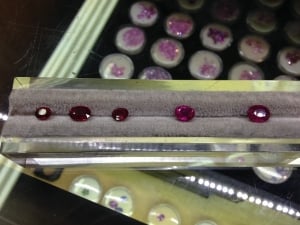
and a bit more closeup:
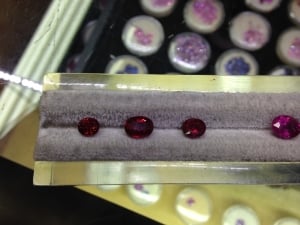
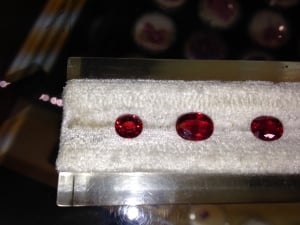
I am very excited to join this forum and hopefully participate in many discussions.
My boyfriend and I (more so my BF) are in the process of creating an engagement ring. I am completely in love with colored stones especially rubies and I am 100% sure I want a ruby engagement ring. We went to a gem dealer in the area and he showed us a few rubies. I believe they are all heat treated and a few treated with beryllium. Based on my research, I don't like the idea of heat treatments, especially beryllium treatments, but he seemed to convince us that trying to find an unheated ruby is pretty difficult.
Is it extremely difficult to find unheated rubies these days? Also, what are the cons of beryllium treatments, if any? I am not looking to ever sell it, so my concerns are probably a bit different than that of a gem collector. I'm just wondering what the effects beryllium has on the rubies for long-term everyday wear such as an engagement ring.
I was wondering if I may kindly request your opinion on the rubies we looked at. Any opinion would be greatly appreciated.
Thank you for your responses!

and a bit more closeup:







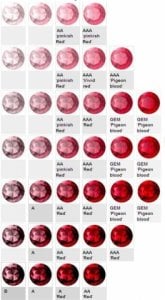
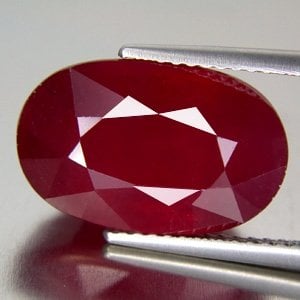


300x240.png)